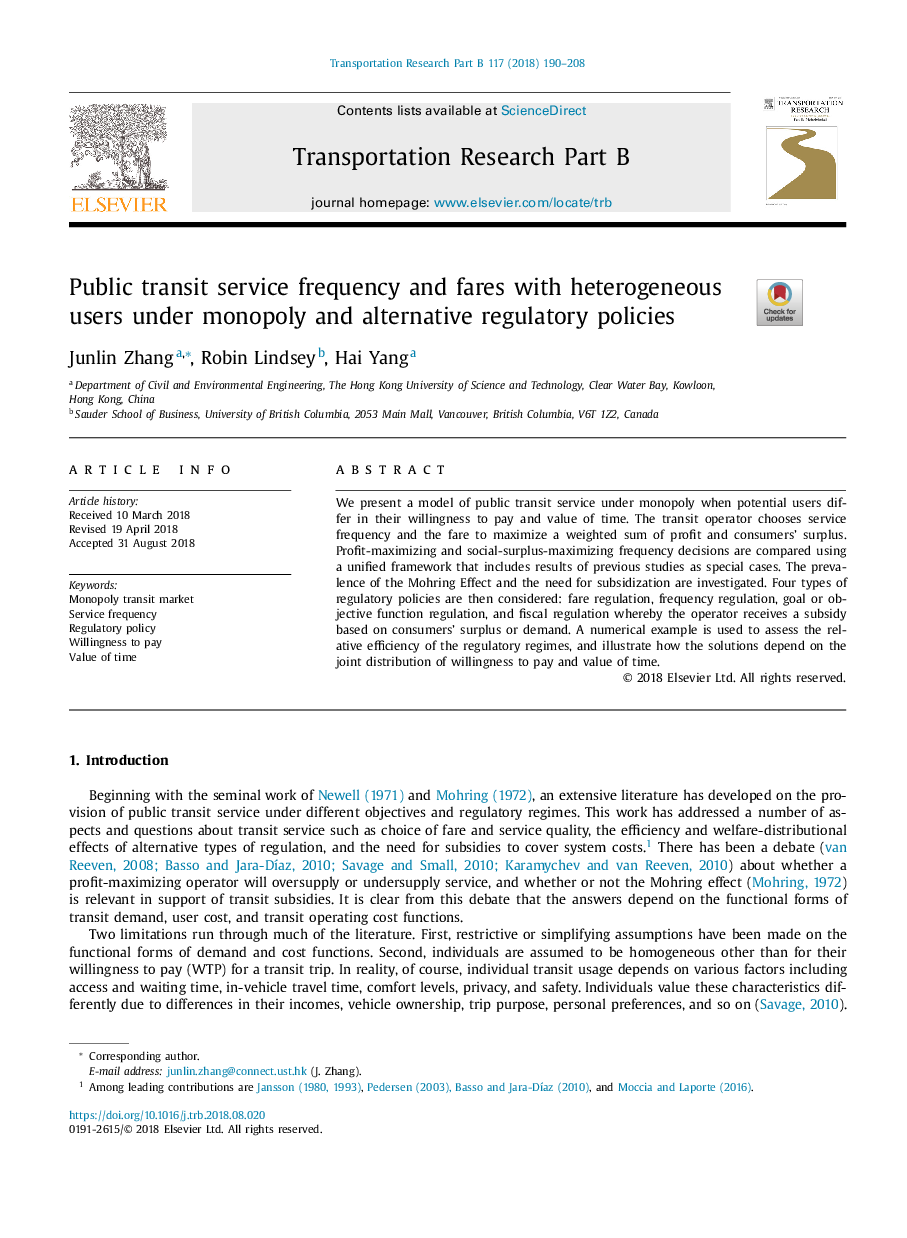| Article ID | Journal | Published Year | Pages | File Type |
|---|---|---|---|---|
| 10140703 | Transportation Research Part B: Methodological | 2018 | 19 Pages |
Abstract
We present a model of public transit service under monopoly when potential users differ in their willingness to pay and value of time. The transit operator chooses service frequency and the fare to maximize a weighted sum of profit and consumers' surplus. Profit-maximizing and social-surplus-maximizing frequency decisions are compared using a unified framework that includes results of previous studies as special cases. The prevalence of the Mohring Effect and the need for subsidization are investigated. Four types of regulatory policies are then considered: fare regulation, frequency regulation, goal or objective function regulation, and fiscal regulation whereby the operator receives a subsidy based on consumers' surplus or demand. A numerical example is used to assess the relative efficiency of the regulatory regimes, and illustrate how the solutions depend on the joint distribution of willingness to pay and value of time.
Related Topics
Social Sciences and Humanities
Decision Sciences
Management Science and Operations Research
Authors
Junlin Zhang, Robin Lindsey, Hai Yang,
